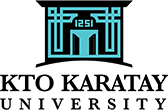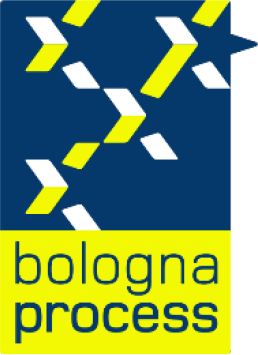Medical Imaging Techniques
Course Details

KTO KARATAY UNIVERSITY
Vocational School of Medical Services
Programme of Medical Imaging Techniques
Course Details
Vocational School of Medical Services
Programme of Medical Imaging Techniques
Course Details

| Course Code | Course Name | Year | Period | Semester | T+A+L | Credit | ECTS |
|---|---|---|---|---|---|---|---|
| 02921013 | Basic Health | 1 | Spring | 2 | 2+0+0 | 3 | 3 |
| Course Type | Elective |
| Course Cycle | Associate (Short Cycle) (TQF-HE: Level 5 / QF-EHEA: Short Cycle / EQF-LLL: Level 5) |
| Course Language | Turkish |
| Methods and Techniques | - |
| Mode of Delivery | Face to Face |
| Prerequisites | - |
| Coordinator | - |
| Instructor(s) | - |
| Instructor Assistant(s) | - |
Course Content
Basic health information about health, health services, disease prevention, childhood, epidemics, adolescence, women's health, family planning, basic health information about diseases in body systems
Objectives of the Course
This derste basic principles related to diseases in terms of student, health, disease, people and their needs, causes of illness, frequency, health services; systems and diseases; The aim of the course is to acquire the knowledge, skills and competencies related to sterilization disinfection, asepsis antisepsis, hospital infections, definition, transmission routes, prevention, healthcare health and medical waste management.
Contribution of the Course to Field Teaching
| Basic Vocational Courses | |
| Specialization / Field Courses | |
| Support Courses | X |
| Transferable Skills Courses | |
| Humanities, Communication and Management Skills Courses |
Relationships between Course Learning Outcomes and Program Outcomes
| Relationship Levels | ||||
| Lowest | Low | Medium | High | Highest |
| 1 | 2 | 3 | 4 | 5 |
| # | Program Learning Outcomes | Level |
|---|---|---|
| P2 | Has knowledge of general medical terms, first aid issues related to anatomical and physiological issues related to the field of health, and uses applied knowledge. | 4 |
| P | 3 |
Course Learning Outcomes
| Upon the successful completion of this course, students will be able to: | |||
|---|---|---|---|
| No | Learning Outcomes | Outcome Relationship | Measurement Method ** |
| O1 | Ability to express basic theoretical knowledge about the field of health. | P.2.1 | 1 |
| O2 | Ability to understand the basic principles related to the field of health. | P.2.2 | 1 |
| O3 | Ability to integrate basic theoretical knowledge about health into the field of medical imaging techniques | P.2.3 | 1 |
| O4 | Ability to distinguish the basic elements of theoretical knowledge related to the field of health. | P.2.4 | 1 |
| O5 | Ability to develop strategies in the field of medical imaging techniques by combining basic theoretical and practical knowledge about the field of health. | P.2.5 | 1 |
| O6 | Making suggestions for improvements in the field of medical imaging techniques by using basic theoretical and practical knowledge about the field of health. | P.2.6 | 1 |
| ** Written Exam: 1, Oral Exam: 2, Homework: 3, Lab./Exam: 4, Seminar/Presentation: 5, Term Paper: 6, Application: 7 | |||
Weekly Detailed Course Contents
| Week | Topics |
|---|---|
| 1 | Health concept and history, health services and ways to benefit |
| 2 | Protective practices and rules for personal protection from diseases |
| 3 | Protection from infections, asepsis-antisepsis concepts and prevention |
| 4 | Basic health information in childhood, general nutrition, basic concepts in common diseases |
| 5 | Adolescence and basic health information |
| 6 | Basic information about women's health, basic information about maternal health and the importance of family planning |
| 7 | midterm exam |
| 8 | Basic health information about child health, basic concepts in common diseases |
| 9 | Basic health information in dermatological diseases |
| 10 | Basic health information in eye and ear, nose and throat diseases |
| 11 | Basic health knowledge in respiratory and cardiovascular system diseases |
| 12 | Basic health information in digestive system diseases |
| 13 | Basic health information in endocrine and urogenital system diseases |
| 14 | Basic health information about blood diseases and cancer |
Textbook or Material
| Resources | Internal medicine (semiotics). Kays A, Molvalılar S. Alfa Publishing, 2007. |
| Internal medicine (semiotics). Kays A, Molvalılar S. Alfa Publishing, 2007. |
Evaluation Method and Passing Criteria
| In-Term Studies | Quantity | Percentage |
|---|---|---|
| Attendance | - | - |
| Laboratory | - | - |
| Practice | - | - |
| Field Study | - | - |
| Course Specific Internship (If Any) | - | - |
| Homework | - | - |
| Presentation | - | - |
| Projects | - | - |
| Seminar | - | - |
| Quiz | - | - |
| Listening | - | - |
| Midterms | 1 | 40 (%) |
| Final Exam | 1 | 60 (%) |
| Total | 100 (%) | |
ECTS / Working Load Table
| Quantity | Duration | Total Work Load | |
|---|---|---|---|
| Course Week Number and Time | 14 | 2 | 28 |
| Out-of-Class Study Time (Pre-study, Library, Reinforcement) | 14 | 2 | 28 |
| Midterms | 1 | 14 | 14 |
| Quiz | 0 | 0 | 0 |
| Homework | 0 | 0 | 0 |
| Practice | 0 | 0 | 0 |
| Laboratory | 0 | 0 | 0 |
| Project | 0 | 0 | 0 |
| Workshop | 0 | 0 | 0 |
| Presentation/Seminar Preparation | 0 | 0 | 0 |
| Fieldwork | 0 | 0 | 0 |
| Final Exam | 1 | 20 | 20 |
| Other | 0 | 0 | 0 |
| Total Work Load: | 90 | ||
| Total Work Load / 30 | 3 | ||
| Course ECTS Credits: | 3 | ||
Course - Learning Outcomes Matrix
| Relationship Levels | ||||
| Lowest | Low | Medium | High | Highest |
| 1 | 2 | 3 | 4 | 5 |
| # | Learning Outcomes | P2 |
|---|---|---|
| O1 | Ability to express basic theoretical knowledge about the field of health. | 4 |
| O2 | Ability to understand the basic principles related to the field of health. | 4 |
| O3 | Ability to integrate basic theoretical knowledge about health into the field of medical imaging techniques | 4 |
| O4 | Ability to distinguish the basic elements of theoretical knowledge related to the field of health. | 4 |
| O5 | Ability to develop strategies in the field of medical imaging techniques by combining basic theoretical and practical knowledge about the field of health. | 4 |
| O6 | Making suggestions for improvements in the field of medical imaging techniques by using basic theoretical and practical knowledge about the field of health. | 4 |
